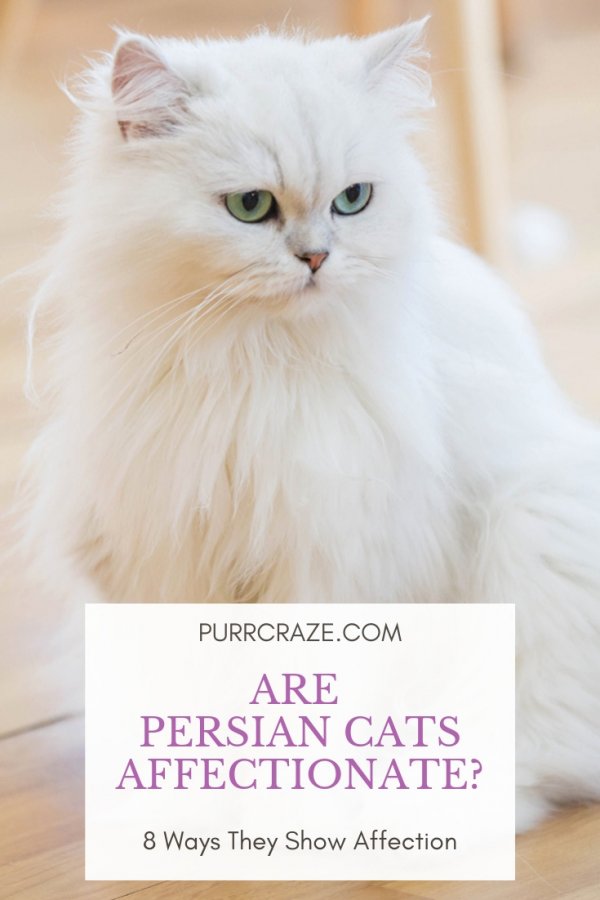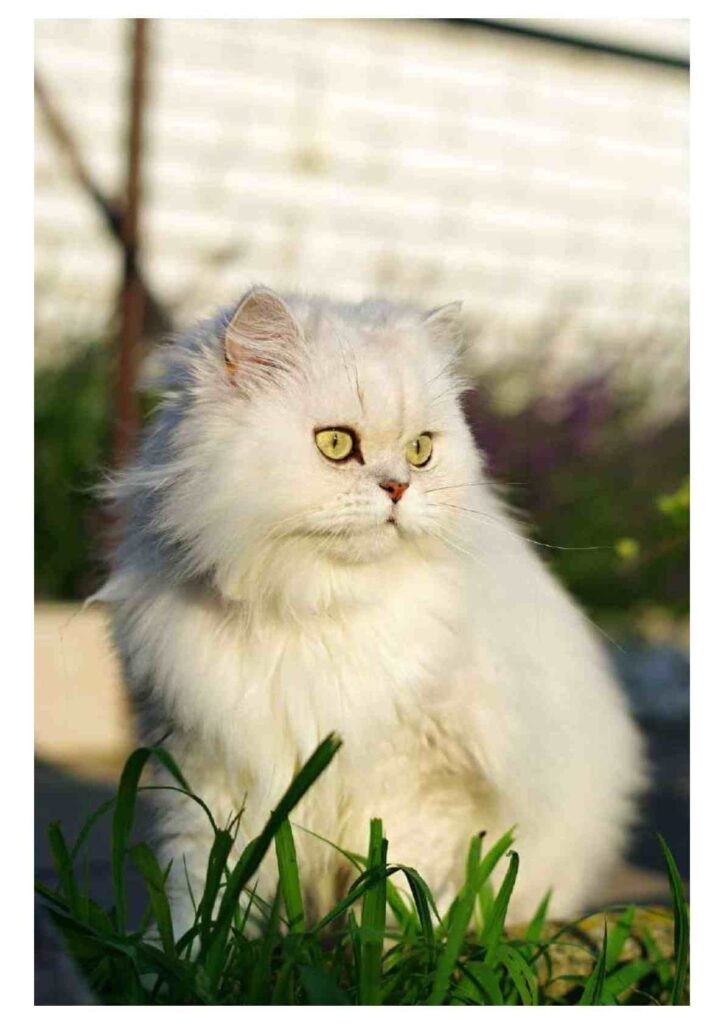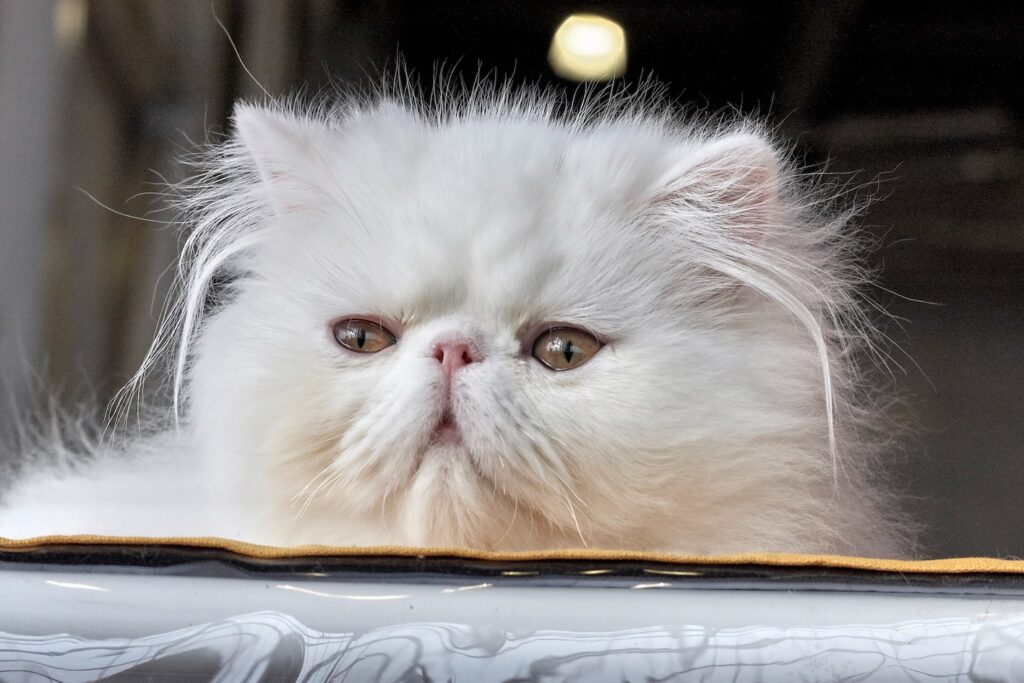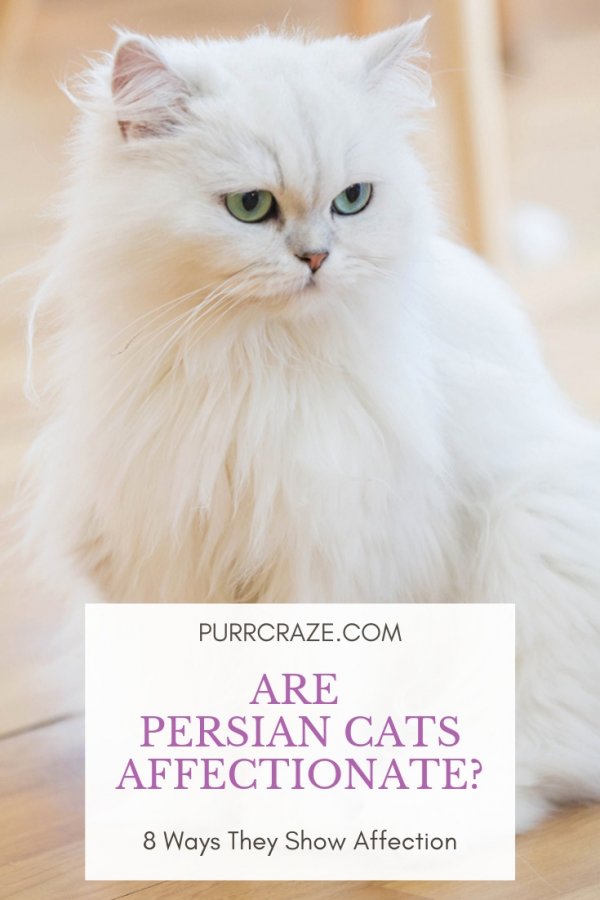If you’ve ever witnessed the sweet connection between a Persian cat and a child, you understand the beauty and magic of this bond. Persian cats, with their luxurious coats and elegant demeanor, have a special way of captivating the hearts of children. Whether it’s their gentle nature, their patient and calm demeanor, or their ability to provide comfort and companionship, Persian cats have an undeniable allure for young ones. In this article, we will explore the unique bond between Persian cats and children, shedding light on why these feline companions make such wonderful additions to a family. So, grab a cup of tea, sit back, and prepare to be enchanted by the love between Persian cats and children.
The Bond Between Persian Cats and Children

Introduction to Persian Cats
Persian cats are an elegant and enchanting breed that have captivated the hearts of many pet owners. Known for their luxurious long fur, sweet expression, and docile nature, Persian cats make wonderful companions for people of all ages, including children. In this article, we will explore the unique bond between Persian cats and children, discussing the benefits, characteristics, and factors to consider before owning a Persian cat. We will also provide tips on preparing your home for a Persian cat, introducing them to children, and creating a safe environment for both the cat and child. Additionally, we will discuss activities that can strengthen the bond between Persian cats and children, as well as address common concerns and provide solutions.
Benefits of Persian Cats for Children
Companionship and Emotional Support
One of the greatest benefits of Persian cats for children is the companionship and emotional support they provide. Persian cats are known for their calm and gentle nature, making them ideal companions for children seeking comfort and affection. These feline friends offer a sense of security and unconditional love, helping children to feel less alone and more emotionally stable.
Teaching Responsibility and Empathy
Owning a Persian cat can be an excellent opportunity to teach children about responsibility and empathy. Caring for a pet involves tasks such as feeding, grooming, and providing a safe environment. By involving children in these responsibilities, they develop a sense of accountability and learn to empathize with the needs of another living creature.
Improving Social Skills
Persian cats can also enhance a child’s social skills. Through interactions with their feline friend, children learn about non-verbal communication, empathy, and respecting boundaries. They can develop a deeper understanding of emotional cues and body language, which can translate into better relationships with people as well.
Stress Relief and Relaxation
Interacting with Persian cats has been shown to provide stress relief and relaxation benefits for both children and adults. Petting a cat has a soothing effect and can help reduce anxiety and lower blood pressure. Spending time with a Persian cat can create a calming atmosphere, allowing children to unwind and find momentary escape from the pressures of everyday life.
Characteristics of Persian Cats
Grooming Needs and Maintenance
One prominent characteristic of Persian cats is their long, luxurious coat, which requires regular grooming and maintenance. The fur can become easily tangled and matted if not properly cared for, so daily brushing is essential to remove loose hairs and prevent matting. This grooming routine helps to keep their coat in top condition and prevent discomfort or skin issues.
Health Considerations
Persian cats are susceptible to certain health conditions, including respiratory problems, dental issues, and eye infections. Their facial structure, known as brachycephalic, can lead to breathing difficulties and requires special attention and care. Regular visits to the veterinarian are crucial to ensure the well-being and early detection of any potential health issues.
Typical Behavior Patterns
Persian cats are generally calm, reserved, and prefer a quiet and relaxed environment. They are not typically as active or playful as some other cat breeds, so they may be more suitable for children who appreciate a calm and peaceful pet. It’s important to note that each cat has its own personality, so there can be variations in behavior even within the Persian breed.
Lifespan of Persian Cats
Persian cats have an average lifespan of 12 to 16 years, although with proper care, they can live even longer. It’s important for potential owners, especially families with children, to consider the long-term commitment associated with pet ownership. This includes providing love, care, and attention throughout the cat’s life.
Factors to Consider Before Owning a Persian Cat
Time and Commitment Required
Owning a Persian cat requires a significant time commitment. These cats thrive on companionship and need daily interaction and playtime. Additionally, the grooming needs of Persian cats demand regular attention, including brushing and maintaining their coat. Prospective owners must be willing to dedicate time and effort to ensure the well-being and happiness of their furry friend.
Financial Responsibilities
It’s essential to consider the financial responsibilities associated with owning a Persian cat. Beyond the initial costs of adoption or purchase, there are ongoing expenses such as food, litter, grooming supplies, and regular veterinary check-ups. Additionally, unforeseen medical expenses may arise, so it’s important to have a financial plan in place to provide for all the cat’s needs.
Allergies and Household Compatibility
Before bringing a Persian cat into your home, it’s crucial to consider potential allergies and household compatibility. Some individuals may have allergies to cats, including Persian cats, which can cause discomfort and health issues. It’s advisable to spend time with Persian cats to assess any allergic reactions before committing to ownership.
Living Arrangements and Space
Persian cats are well-suited to indoor living and thrive in a quiet and calm environment. Before bringing a Persian cat into your home, consider the space available and ensure it can accommodate the needs of the cat. Providing enough space for them to roam and play comfortably is vital for their physical and mental well-being.
Other Pets in the Household
If you already have other pets in your household, it’s crucial to consider their compatibility with a Persian cat. While Persian cats are generally gentle and get along well with other animals, it’s important to introduce them gradually and ensure that all pets are comfortable and safe around each other.

Preparing Your Home for a Persian Cat
Creating a Safe and Comfortable Environment
Before bringing a Persian cat home, it’s important to create a safe and comfortable environment. This includes providing a cozy bed, hiding spots, and scratching posts to fulfill their natural instincts. Eliminate any potential hazards or toxic substances that could harm the cat or children, such as certain houseplants or cleaning chemicals.
Providing Appropriate Litter Boxes and Scratching Posts
Persian cats have specific litter box needs. They prefer a spacious and clean litter box, as well as easy access to it. Consider providing multiple litter boxes in different areas of the house to accommodate their preferences. Additionally, provide scratching posts or pads to satisfy their natural instinct to scratch and prevent them from damaging furniture.
Securing Hazardous Areas
To ensure the safety of both the cat and children, it’s important to secure hazardous areas. Install childproof locks on cabinets containing potentially harmful substances, such as cleaning supplies or medications. Close off any areas where the cat could become trapped or injured, such as crawlspaces or balconies.
Choosing Suitable Toys and Accessories
Persian cats enjoy gentle play and stimulation, so it’s important to choose suitable toys and accessories. Opt for toys that encourage interaction and mental stimulation, such as wand toys, puzzle toys, or treat puzzles. Provide scratching posts, climbing trees, or shelves to satisfy their need for vertical space and exercise.
Introducing a Persian Cat to Children
Educating Children about Cat Behavior and Needs
Before introducing a Persian cat to children, it’s vital to educate them about cat behavior and needs. Teach children about the importance of gentle handling, respecting boundaries, and reading the cat’s body language. Help them understand that cats may need alone time and may not always be receptive to play or cuddling.
Supervised Interactions and Gentle Handling
When introducing a Persian cat to children, it’s crucial to supervise their interactions and ensure gentle handling. Guide children on how to approach and pet the cat softly, avoiding any rough play or excessive noise that may startle or stress the cat. Reinforce the importance of being gentle and respectful throughout their interactions.
Gradual Introduction and Adjustment Period
Allowing for a gradual introduction and adjustment period is essential to ensure a positive relationship between the Persian cat and children. Start with short, supervised interactions and gradually increase the duration as the cat becomes more comfortable. Give the cat a safe space to retreat to if needed, such as a designated room or hiding spot.
Teaching Boundaries and Respect
Teaching children about boundaries and respect is crucial in maintaining a harmonious relationship between the Persian cat and children. Establish clear guidelines about how to interact with the cat, such as not disturbing them while sleeping or eating. Help children understand that the cat’s comfort and well-being should always be a priority.

Creating a Safe Environment for Persian Cats and Children
Childproofing the Household
To create a safe environment for both Persian cats and children, it’s important to childproof the household. Secure electrical cords, tuck away small objects that could be swallowed, and use outlet covers to prevent accidents. Put away any hazardous substances, including cleaning products, medications, or toxic plants.
Avoiding Harmful Substances and Plants
Certain substances and plants can be toxic to Persian cats and children. Avoid using chemicals or pesticides that may harm the cat if ingested or inhaled. Research and identify any houseplants that are toxic to cats and remove them from the household to prevent accidental ingestion or contact.
Establishing a Routine and Rules
Establishing a routine and clear rules can help create a safe environment for Persian cats and children. Set specific feeding times for the cat and teach children not to disturb them during meals. Establish guidelines for playtime and ensure that children understand the importance of respecting the cat’s boundaries.
Monitoring Interactions and Supervision
Regularly monitor interactions between Persian cats and children to ensure safety and well-being. Supervise play sessions to prevent any rough play or accidental harm to either party. By closely monitoring interactions, you can intervene if necessary and address any issues that may arise.
Nurturing the Bond Between Persian Cats and Children
Encouraging Play and Interactive Activities
Encouraging play and interactive activities is an excellent way to nurture the bond between Persian cats and children. Provide toys that can be used for interactive play, such as feather wands or toys that encourage chasing and pouncing. Engage in play sessions with both the cat and children to foster a sense of togetherness and fun.
Involving Children in Feeding and Grooming
Involving children in the feeding and grooming routine of the Persian cat can strengthen their bond. Assign age-appropriate tasks, such as measuring and pouring food into bowls or assisting with gentle brushing. By actively participating in the care of their feline companion, children develop a sense of responsibility and investment in the relationship.
Providing Positive Reinforcement
Providing positive reinforcement is essential in nurturing the bond between Persian cats and children. Reward and praise both the cat and children for positive interactions and behaviors. This not only encourages a positive association but also reinforces good behavior and strengthens the bond between them.
Quality Time and Bonding Activities
Spending quality time together is crucial for both Persian cats and children. Set aside dedicated bonding time where the cat and children can engage in activities they both enjoy. This can include cuddling, reading together, or simply relaxing in each other’s company. By creating positive and enjoyable experiences, the bond between Persian cats and children will deepen over time.

Activities to Strengthen the Bond
Reading and Relaxing Together
Reading and relaxing together can be a delightful bonding activity for Persian cats and children. Settle down in a quiet corner with a favorite book, allowing the cat to curl up beside the child. This shared activity promotes a sense of calm and connection, enhancing the bond between them.
Playful Games and Puzzle Toys
Engaging in playful games and providing puzzle toys can strengthen the bond between Persian cats and children. Play hide-and-seek with the cat, use laser pointers for interactive play, or provide puzzle toys that stimulate their natural instincts. These activities create a joyous atmosphere and reinforce the bond through shared enjoyment.
Training and Tricks
Teaching Persian cats tricks or commands can be a fantastic way for children to bond with their feline friend. Start with simple commands, such as sit or paw, and reward the cat with treats and praise when they successfully perform the action. This promotes a sense of accomplishment for both the cat and children, strengthening their bond.
Outdoor Adventures and Walks
Supervised outdoor adventures and walks can provide a unique opportunity for Persian cats and children to bond. Consider using a harness and leash to allow the cat to explore the outdoors safely. This shared experience allows both the cat and children to enjoy fresh air, exercise, and new stimuli, strengthening their connection.
Common Concerns and Solutions
Allergy Management and Prevention
Allergies to cats, including Persian cats, can be a concern for some individuals. To manage and prevent allergies, it’s important to keep the home clean by regularly vacuuming, dusting, and reducing allergens in the environment. Brushing the cat regularly can also help reduce the amount of loose fur and dander that may trigger allergies.
Handling Aggression or Fear in Cats
Occasionally, Persian cats may exhibit aggression or fear toward children or other pets. In such cases, it’s important to determine the underlying cause and address it accordingly. Consult with a veterinarian or professional animal behaviorist for guidance on managing aggression or fear in cats. Avoid punishing the cat, as it can exacerbate the problem.
Dealing with Scratching and Biting
Persian cats may engage in scratching and biting behaviors, which can be a concern for children. To manage these behaviors, provide appropriate scratching posts and redirect the cat’s attention to them. Teach children the importance of avoiding rough play or provoking the cat, and how to handle any accidental scratches or bites calmly and appropriately.
Managing Shedding and Grooming Challenges
The long fur of Persian cats requires regular grooming to prevent matting and excessive shedding. Establish a grooming routine where children can assist in brushing the cat’s fur, removing loose hairs, and ensuring their coat stays healthy and tangle-free. Regular grooming not only promotes the cat’s well-being but also reinforces the bond between the cat and children.
At the end of the post, here are 10 common questions people ask about Persian cats:
-
Are Persian cats good with children?
- Yes, Persian cats are generally calm and gentle, making them great companions for children.
-
How often do Persian cats need grooming?
- Persian cats require daily grooming to keep their long fur in top condition and prevent matting.
-
Are Persian cats hypoallergenic?
- No, Persian cats are not hypoallergenic, and some individuals may have allergies to their fur or dander.
-
Can Persian cats be kept as indoor pets?
- Yes, Persian cats are well-suited to indoor living and should not be allowed to roam freely outdoors unsupervised.
-
What is the average lifespan of a Persian cat?
- Persian cats have an average lifespan of 12 to 16 years, although with proper care, they can live even longer.
-
Do Persian cats get along with other pets?
- Persian cats generally get along well with other pets, but it’s important to supervise interactions and introduce them gradually.
-
Can Persian cats be trained?
- Yes, Persian cats can be trained, although they may not be as willing to learn tricks as some other cat breeds.
-
Do Persian cats require a lot of exercise?
- Persian cats are not as active as some other cat breeds and have lower exercise requirements. However, playtime and mental stimulation are still important for their well-being.
-
How much do Persian cats shed?
- Persian cats are known for their heavy shedding, so regular grooming and brushing are necessary to manage their fur and prevent matting.
-
Are Persian cats prone to health issues?
- Persian cats are prone to certain health issues, including respiratory problems, dental issues, and eye infections. Regular veterinary check-ups are essential to monitor their health.

